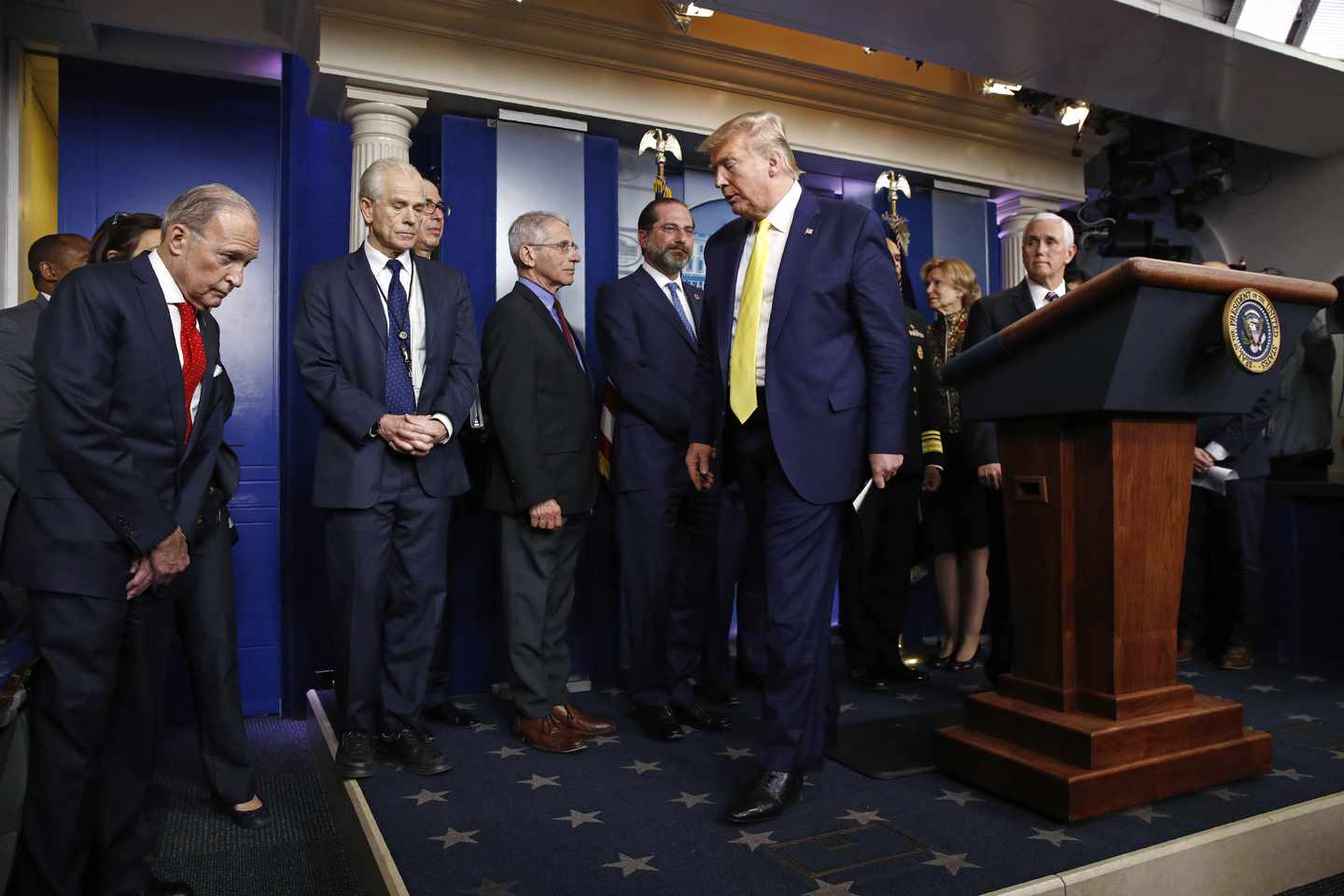Bad Week for Trump's Re-Election Campaign
March 10, 2020#election2020 #DonaldTrump #JoeBiden #BernieSanders #Coronavirus #econnomy

About a month ago, President Trump looked like a smart bet for reelection. His job approval had hit all-time highs in the RealClearPolitics polling average, his Democratic opponents looked as though they were locked in a lengthy battle for the nomination, and it seemed likely that Bernie Sanders would have the pledged delegate lead heading into the Democratic Convention.
Things have changed. Reasonable minds can disagree on Trump’s precise chances at reelection, but people can’t really disagree that those chances have taken a hit. Here are a couple of reasons why:
1. The likely collapse of Sanders’ campaign. For much of this new year, the Vermont senator appeared to be in the driver’s seat for the nomination. Particularly after his solid win in the Nevada caucuses, establishment Democrats’ best bet seemed to be to gun for a brokered convention.
It isn’t clear what, exactly, changed the momentum in Biden’s favor, whether it was a spate of endorsements after the South Carolina primary or Sanders’ doubling down in his defense of Cuba. But Biden has executed a Lazarus-like comeback. After notching a solid victory in the Palmetto State, he dominated Super Tuesday, defeating Sanders in Minnesota, Massachusetts and Maine, states previously thought to be favorable to the progressive candidate. He opened up a small delegate lead on the strength of performances in heavily African American districts in Alabama, North Carolina and Virginia. Moreover, he defeated Sanders in almost every demographic grouping.
Even if Sanders somehow pulls off a 2016-style comeback in Michigan, his path to the nomination is challenging, to say the least. His weakness in Southern states means that Biden will likely continue to amass delegates, making it difficult for Sanders to catch up.
While Sanders was underrated by some as a potential opponent for Trump, we shouldn’t consider him as strong as Biden in that regard. The former vice president definitely has his downsides as a candidate, but he also has the best chance of putting together the coalition of voters that propelled Democrats to victory in 2018. Sanders could put together a winning coalition as well, but it would require assembling something very different than Democrats have had in recent years (and probably would require turning out massive numbers of new voters).
Finally, Trump was hoping for a lengthy primary fight that would extend into the spring and potentially even into the summer. Even if Sanders persists, the fact that it's down to a two-man race alone hurts Trump’s chances.
2. The continued spread of coronavirus. Let us say up front: The coronavirus is first and foremost a public health issue. It is also second, third, fourth, and fifth a public health issue. Our efforts at combating the spread should focus on these concerns, and not political ones.
At the same time, elections analysts can’t ignore the political impact. Chief among the upshots will be the public’s response to the Trump administration’s handling of the crisis. It’s far too early to say what that will be. If we get to the summer and we’re approaching the worst-case scenario that some are predicting — our hospital system is overwhelmed, deaths are approaching hundreds of thousands, and people are afraid to leave their homes — then the administration’s response surely will be judged unfavorably.
If, however, something along the lines of the best-case scenario unfolds – warm weather slows the spread, hospitals deal with the caseload effectively, and the overall fatality rate is well under 1% – it is probably a different story. We should recall that this virus has only been in circulation for three months, and has only been acknowledged for about two-thirds of that time; there is probably more that we don’t know about it than we do know about it.
So far, Trump’s job approval is off its peak, but it is still at a level that would have been considered a peak a few months ago. We’ll see how this holds up over the next few months.
The economy, however, is another matter. Trump’s best argument for reelection was the strong economy, and the February jobs numbers suggested that we had shaken off the doldrums of last fall. But with large portions of the world clamping down on travel and businesses being uncertain about the future, a drop-off in growth seems unavoidable.
If this virus follows a best-case path, we might see a sharp rebound in the third quarter – we may recall this from the debate over the “V-shaped” vs. “U-shaped” recovery in 2009. The problem for Trump is that political science models have generally looked to the second quarter as the key marker for explaining presidential elections. There isn’t unanimity on this, but the basic idea is that economic conditions take a while to soak in.
In other words, if things are getting better in September and October, people won’t perceive it until after the election. This can explain why President George H.W. Bush didn’t benefit from the improving economy in the second half of 1992, and why John McCain only lost by seven percentage points amid the 2008 financial collapse.
Of course, there is a lot of time between now and November. Just as things look decidedly better for the Democrats than they did a month ago, so too will thing likely take a turn in the other direction at some point during the campaign. Only one thing is certain at this point: Everything looks far murkier than it did a month ago.
Source: https://www.realclearpolitics.com/

